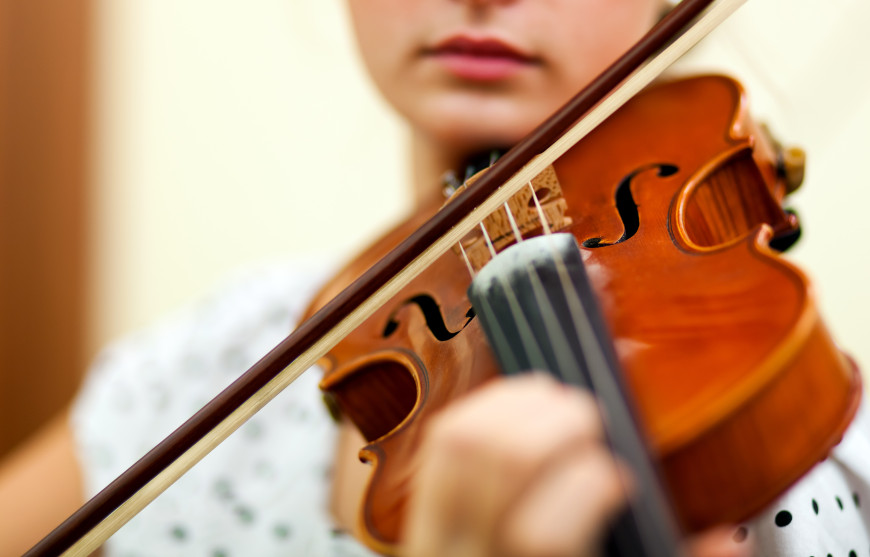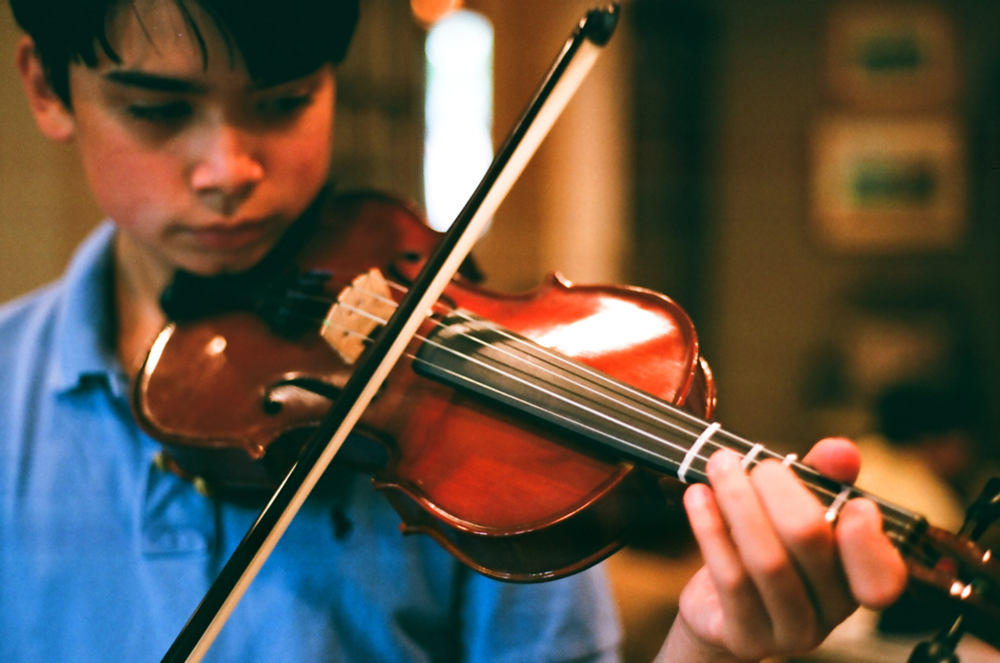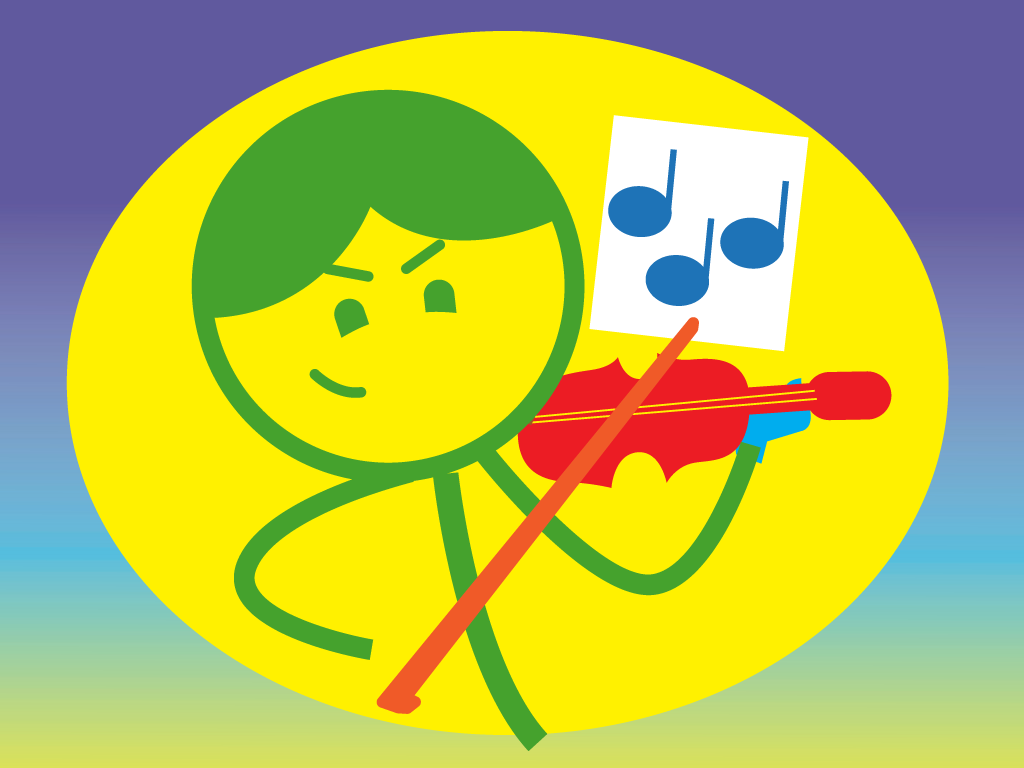How to make your violin practice time more effective

Practicing efficiently is a learned skill. Just like you learn to use slurs or vibrato, a violinist must also learn how to practice.
A good practice session is about quality, not quantity. Quality practice time is structured, focused, and goal-oriented. If you consistently practice this way, you will accomplish more in a shorter amount of time and see better results.

Structured Practicing
Develop a routine for your practice sessions and stick with it every day. Always start with a warm-up. Instead of doing different warm-ups every time you practice, select a few exercises that you can play every day (open string exercises, tetrachords, scales on one string, etc.) For variety, you can do these exercises on different strings and in different keys. Keeping the same warm-ups for several weeks or months makes it much easier to track your progress.
A good practice routine should look something like this:
Stretching: This not only limbers up your muscles, but it also helps you get in the right state of mind for practicing.
Bow Warm-Ups: Scales tend to revolve around the left hand, so start out with long bows on open strings. Focus on relaxing, breathing, and getting a good tone. This should never be boring. There is always something to think about when it comes to your bow. I think of this as yoga for your bow arm.
Scales and Arpeggios: Never rush through your scales. This is your time to concentrate on intonation (playing in tune). You can also use scales to practice different rhythms and bowing patterns that might show up in your pieces.
Method Books/ Etudes/ Technical Exercises: Notice how a good routine slowly increases with difficulty for each step.
New pieces you are learning
Improvisation/ Playing songs you’ve already learned. Don’t skip this step! Take time to experiment with your instrument and develop more musicality with songs you’ve already played.
Focused Practicing
|
Lessonface has created a new option for students: a practice log to help you track your practice, which we will have ready-to-use this month. The log will come with real stickers -- for helping kids (of all ages) keep up with practicing in a fun way. Would you like to help us test? Sign up here, and we'll mail you a two-month set of logs + stickers for free. You can download and print the practice log template at any time here. Limited, US-based students only at this time, with apologies to our outside-of-the-US-students, while supplies last, one set per student. After the trial period, we will have the log template free for download and print, and stickers as an option. |
It’s easy to just “run-through” your pieces, but “running through” something only devours your practice time and leaves you little to show for it. Follow these tips to keep your practice time focused.
Practice smaller sections. Never try to perfect an entire exercise or song all at once. Focus on one measure at a time, then work one line at a time, then play one section at a time, then you can play through the entire piece.
Start with the hardest sections. Conquer these first. Isolate other sections. Practice the ending all by itself. Then you can move on to the beginning. Beginnings can be tricky, so play the first one to two measures several times. Focus on finding the correct starting pitch immediately. Make sure you know the tempo before you start. And remember to breathe!
Split your time between the left and right hand. Many students focus solely on the finger placement of the left hand, neglecting the right hand entirely. When you practice something (whether it’s a measure, a line, or a larger section), play it at least three times. Once for the left hand, once focusing on the bow and tone production, and once thinking about both hands.
Think analytically. If you are having a bad practice session or things just “aren’t sounding right,” don’t give up. Instead, try to figure out what the problem is. Is it a right or left hand issue? Is it a certain measure? A particular string crossing? A long slur? Once you find the problem, focus on that. If it has something to do with the left hand, don’t worry about the bowings. Play separate bows or forget about your bow altogether and play pizzicato. If it is a right hand issue, play the passage without your left hand.
Use your tool bag. When something doesn’t sound good, don’t resign yourself to just playing it over and over again. You have much better tools in your tool bag! As you progress, you’ll collect more and more “tools,” and you’ll know which one to use for each occasion. In your lessons, pay attention when your teacher asks you to play a measure differently than what is written. Those are “tools.” Some tools include playing a measure slowly, playing pizzicato, stopping the bow in between each note, playing a section with different rhythms, singing the measure, or playing it on the piano, to name just a few.
Play slowly. Whatever instrument you play, there are dozens of things to think about. Practicing slowly gives your mind a chance to tell your hands exactly what they need to do.
Goal-Oriented Practicing
A good practice session has an end goal in mind. Have a few over-arching goals and then smaller goals for each exercise. Larger goals may include keeping your left wrist straight for the whole practice session or playing more in the lower half of the bow. These are things you think about everything you play. Smaller goals might be to get a certain measure up to speed or smoothing out a shift.
Make your goals very specific. Don’t settle for just “making it sound better” or “learning vibrato.” Instead, choose goals like “using full bows” or "making my pinky vibrato stronger.” Please print out your teacher’s notes from your lesson and keep them on your stand. This can guide your practice and remind you of what you’re trying to achieve.
Keep track of your goals. Circle difficult measures, highlight notes that are always out of tune, write a target metronome marking at the top of the page. Better yet, write your goals down. If you can articulate exactly what you want to accomplish, you and your teacher can develop a plan for achieving it!
Like any skill you learn, the more you work at it, the easier it will become. Make a point to practice practicing. Develop a routine, stay focused, and work towards your goals!
Happy Practicing!
Book a lesson with Lora Gallman.
Find more Violin Classes and Tutorials





